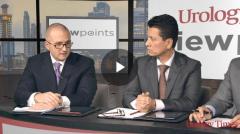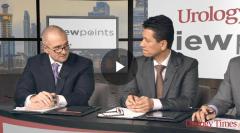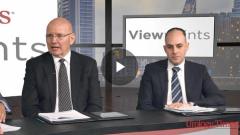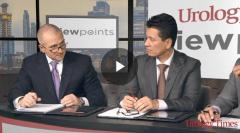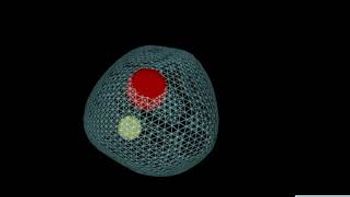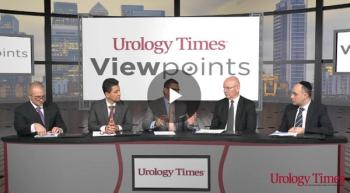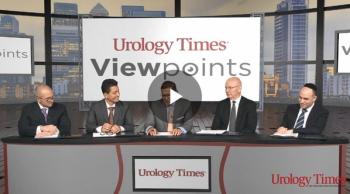
Identifying Appropriate Therapy for Patients in Prostate Cancer
Episodes in this series

[Transcript]
Raoul Concepcion, MD, FACS: Paul, Gordon, you guys are very active. Comment, if you will, about how this plays out: low-volume, high-volume, ADT [androgen deprivation therapy] plus the addition. How are you driving that home in your group, and how are you educating your partners? Because the reality is that in the United States, most of the ADT for this patient still gets started by urology.
Gordon Brown, MD: Right. It’s a great question. Within my group, we have internal mechanisms to identify these patients, and they’re shuttled internally to the right people to get the appropriate care. In our group, I think part of the care patterns are going to be dependent upon the tools at your disposal. Because based on the data, for the NHAs and the oral therapies, they’re agnostic as it relates to volume of disease. Whereas, DOCE [docetaxel] doesn’t seem to be as agnostic. Really, the benefit is primarily in those patients with higher-volume disease.
Because of that, my main message to my partners is that DOCE [docetaxel] isn’t for low-volume guys. We define that arbitrarily as 4 or more bone lesions, 1 being outside the spine or pelvis and/or visceral involvement as a high-volume patient. But the main message that we speak about when we go to the community and educate other providers is that patient ID [identification] is exceptionally important. And understanding that there are good, viable options that significantly improve the survival of patients is our duty as doctors-to identify these patients appropriately, even if we don’t choose to take on their care but get them with somebody who will.
Raoul Concepcion, MD, FACS: Paul?
Paul Sieber, MD: I think you’re right when you said the patients come to us first because they’re coming in with symptomatic disease. We’re up in the double-digit numbers of people presenting with metastatic hormone-sensitive disease, so they’re coming to see us first. But I think the comforting thing for us, as Jorge Garcia said, the PK [pharmacokinetics] changes, so we feel like, hey, we want them on ADT, we want their performance to improve. Many times, they come in with urinary retention; a couple of months later, they’re better.
Our goal is to basically move on at 2 to 4 months, to say they’re ready for us. And the high-volume guys, as Gordon defined, they get docetaxel. And my oncologist and I work very closely together, and basically if the guy is a candidate for docetaxel, he gets it up front. Our feeling is that if he’s not a candidate for docetaxel now, when is he going to be a candidate? We’re fearful that so many people never see docetaxel, that if their best shot of it is up front and it’s defined, it is 6 doses. So they get it up front, and they typically start after a couple of months.
For us the paramount thing is we have a referral process, just like Gordon. They automatically get shuffled to the guys who were experts, the same thing as well. My expertise goes straight to my medical oncologist, and he’s on my speed dial. And we say this guy is ready, he’s tuned up, he’s had his 2 months, he’s way better. Typically, high-volume goes to docetaxel and low-volume always goes to orals, and that oral guy may never come back to docetaxel. That’s not what happens. We talk about it, but a significant number of people never see docetaxel.
Raoul Concepcion, MD, FACS: Right.
Gordon Brown, MD: That’s a very important point. I want to make just 2 comments. One is that there’s a perception that there’s no toxicity associated with the oral therapies, and that’s not true. There’s both real-world physiological toxicity in the patient, and there’s financial toxicity, and there’s a length of therapy. That’s an important concept that Paul articulates. The other thing I wanted to touch on was there are additional data from the STAMPEDE, what Dr Garcia mentioned earlier, relating to the role of definitive local therapy in patients with lower-volume metastatic disease and radiation. There’s a trend a little toward improvement of overall survival in that patient population. That does deserve at least a mention.
Raoul Concepcion, MD, FACS: From a time perspective, this whole concept globally-to your point of what we do with the primary-historically is basically [if] the cow, the horse is out of the barn, we don’t touch the primary. But I think what we’re seeing is that there are clearly some advantages to treating the primary, not only where a patient is symptomatic from an obstructed prostate but also from a molecular standpoint because these clones can go back and reseed. Basically the prostate primary acts as a reservoir almost. But I think the point for this segment is, Jorge, to your point, it’s an excellent point, that in 2020, if a patient has metastatic castration-resistant prostate cancer, ADT by itself is probably not the standard of care. We have to do a better job of educating our colleagues, our partners, to sort of encourage them to look at the additional drug that mechanistically is different but also taken into account the volume of disease.
Panelists:
- Raoul Concepcion, MD, FACS, Vanderbilt University School of Medicine, Nashville, Tennessee
- Jahan Aghalar, MD, Board-certified Hematologist and Oncologist, New York, New York
- Gordon Brown, MD, Rowan University School of Osteopathic Medicine, Glassboro, New Jersey
- Jorge Garcia, MD, Cleveland Clinic, Cleveland, Ohio; Jonathan Henderson, MD, Regional Urologist, Shreveport, Louisiana
- Paul Sieber, MD, Penn Medicine Lancaster General Hospital, WellSpan Ephrata Community Hospital, Lancaster, Pennsylvania
Newsletter
Stay current with the latest urology news and practice-changing insights — sign up now for the essential updates every urologist needs.


